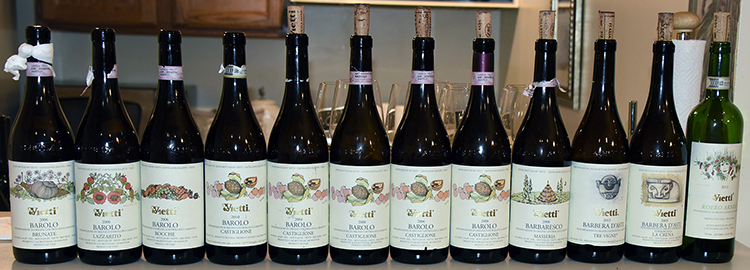Le Tastevin Wine Club - Vietti Tasting – October 11, 2017
Until the late 1960s and early 1970s, growers and farmers sold their grapes and did not bottle.1978 was the first Gaja Barbaresco that was (partially) aged in barriques. It was during the 1970s that, in Italy, the cru concept began to flower, and 1983 was the demise of the botti (E Altare lead) and initial green harvest (Chiarlo, fierce tannins). During the 1990s the pendulum swung to over-oaking and over-extracted wines (modernists). Unfortunately, the excessive use of new oak destroys tipicity as the wood-induced flavors overwhelms Nebbiolo's delicacy and complexity. Nebbiolo naturally has a light red color (darker -> adulteration), its fruit with natural flavors targeting cherry, leather and rose.
Vietti is famous for traditional-styled Barolos, yet has no mention in the book "Barolo and Barbaresco 2014", and apparently flies under the radar. Originally from 1873, it was sold to the Kraus family (Iowa) in 2016 but with Luca still in charge (ex Opus One, Mouton Rothchild). Luca's father married Luciana Vietti. The producer is known for Barolos, but also 5 Barbarescos and Dolcettos as well as a nicely fizzy Moscato. They own property in 15 crus.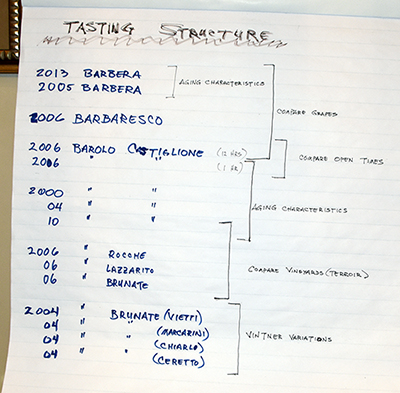
Tonight's tasting "philosophy" is depicted in the digram to the right (click on image for larger picture).
Starter
2013 Arneis - Roero ($18)
The arneis grape was rescued by Alfredo Currado, with the first release in 1967. This bottle is 100% arneis. "Roero" is a place name, not a town name.
Red
2005 Barbera d'Asti Tre Vigne ($37)
2013 Barbera d'Asti La Crena
Barberas are known for consitency, freshness, cherries, food-friendly acidity and likes hot weather. Vietti makes 5 labels and all recognized. They are pressed, fermented and transferred to French oak for secondary (malolactic) fermentation, which gives better acidity and smoothness. Tre Vigne is a blend of sites and should last 10+ years; La Crena (70 year-old vines, unfiltered) and Scarrone ($90) are single site efforts and often go to 20 years, but are more fruity than Barolo. Vietti likes to think they have "weight"; we've tried the 2006 La Crena in June of 2016 and it was "not old". Smoother than Dolcetto, goes well with tomato-based dishes. Barbera is the third most planted red grape in Italy. For excellent recent vintages, look for 2012 and 2015. Generally, good Barolo makers are good Barbera makers, who use the latter for quick cash.
2006 Barbaresco Masseria ($96)
Switching to Barbaresco, one expects more floral notes than Barolo, with softer tannins, more rounded and less oak. These are 100% Nebbiolo. The volume of Barbaresco is 1/3 that of Barolo.And now for the Barolo. There is a subsoil change with the towns of La Morra and BArolo (Brunate cru) on a granite shelf, Serralunga on limestone (Lazzarito cru). One expects austerioty and power from Serra; aroma, elegance, complexity, perfume and earlier-drinking from Brunate. Castiglione is a blend of sites within Barolo DOCG, their entry level Barolo, with stainless steel fermentation, then transferred for 26 months in large casks. It will be more balanced, less tannic than their Perbacco (4 months in barrtiques plus months in large casks), which itself is a declassified Barolo from multiple sites, but not necessarily all DOCG. Perbacco is a great value option, and should have the same shelf-life as Castiglione.
2006 Barolo Castiglione ($48) - opened 12 hours
2006 Barolo Castiglione ($48) - opened 1 hours
2000 Barolo Castiglione ($48)
2004 Barolo Castiglione ($48)
2010 Barolo Castiglione ($54)Now we go to the single vineyard efforts, which generally take longer to mature, have softer tannins and exhibit excellent acidity. As expected, this is a marked step-up in bottle price.
2006 Barolo Rocche ($120)
2006 Barolo Lazzarito ($120)
2006 Barolo Brunate (Vietti) ($122)
2004 Barolo Brunate (Vietti) ($107)
2004 Barolo Brunate (Marcarini) ($85)
2004 Barolo Brunate (M. Chiarlo) ($58)
2004 Barolo Brunate (Ceretto) ($61) - Ceretto has 4 wineries, and has a history of heavy oak, though in 2008 began to reduce its use. Look for G. D. Vajra, who quality often flies under the radar.Vietti supports regional artists in the design of their labels.
Barolo DOCG (effective 9-2013, partial), Rev. A Commune Profile Cru Names Producers La Morra Perfumed, aromatic, delicate Arborina Bovio, E. Altare Marcenasco R. Ratti Monfalletto Cerequio M. Chiarlo Brunate A. Voerzio, Marcarini, Vietti, Chiarlo, Ceretto Rocche dell'Annunziata R. Ratti, P. Scavino Barolo most youthful Cannubi L. Sandrone, P. Scavino, Prunotto, Marchesi di Barolo Sammassa Marchesi di Barolo, Brezza Brunate Vietti, Marcarini, Ceretto, Chiarlo San Lorenzo Mascarello Castiglione Falletto middle ground Rocche Vietti, A. Settimo Monprivato Brovia, G. Mascarello Villero Vietti, Brovia, G. Mascarello Fiasco P. Scavino Bricco Boschis Cavalatto Serralunga dense, tannic Lazzarito Fontanafredda, Vietti, Germano Vigna Rionda Giacosa, Oddero, G. Porro Prapo M. Sebaste, Ceretto, Germano Ornato P. Cesare Colombaro P. Cesare Cerretta Germano Monfortino Giacomo Conterno Monforte dense, tannic Bussia A. Conterno, Parusso, Prunotto, Poderi Colla, Ceretto Ginestra Dom. Clerico, E. Grasso Santo Stefano di Perno Rocche dei Manzoni, Mascarello Pajana Dom. Clerico Novello complexity, finesse Ravera E. Cogno, Vietti, Rinaldi, Mascarello
Images of Wines Sampled
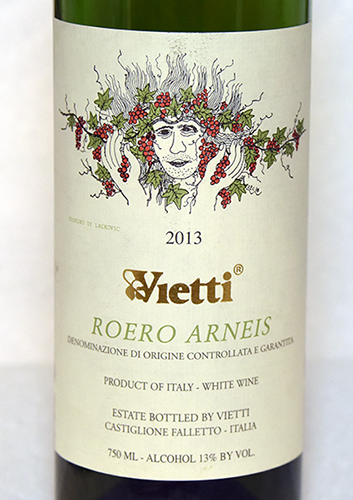

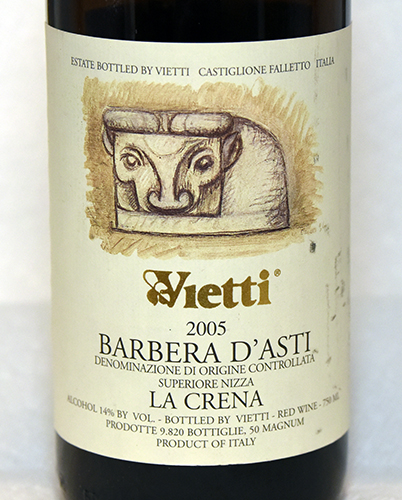
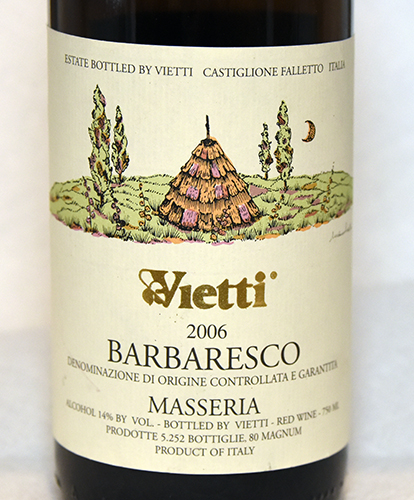
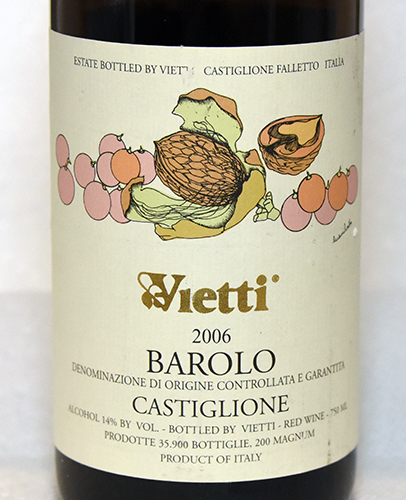
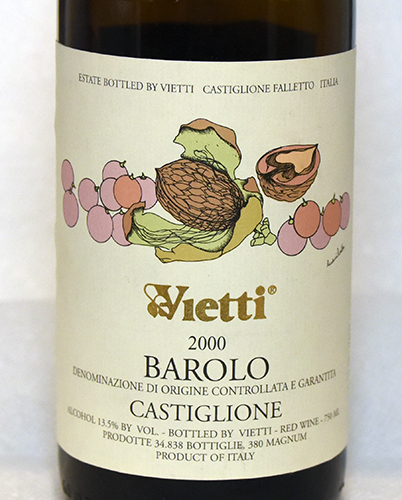
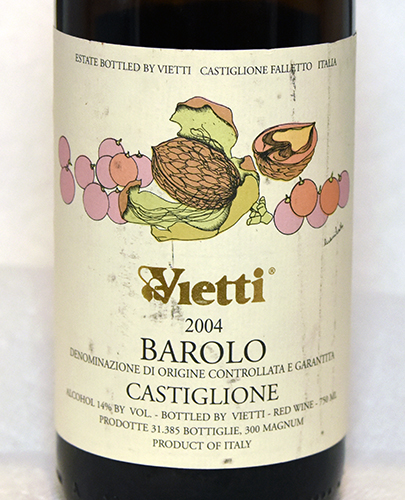
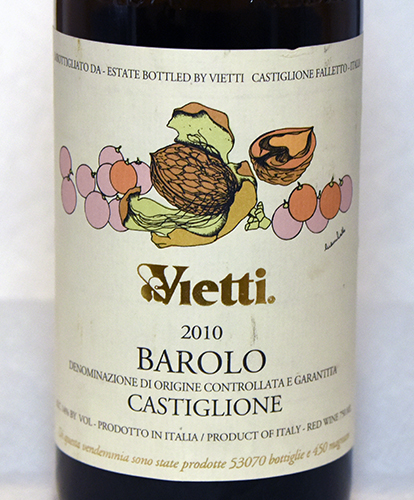
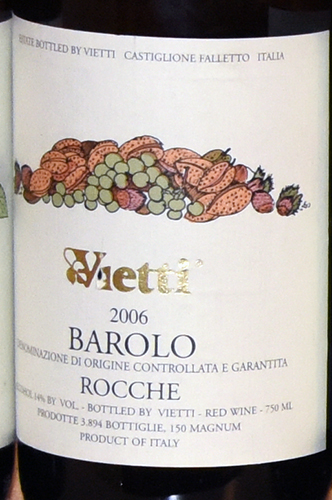
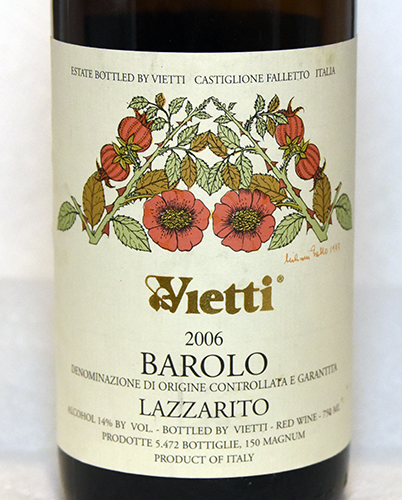
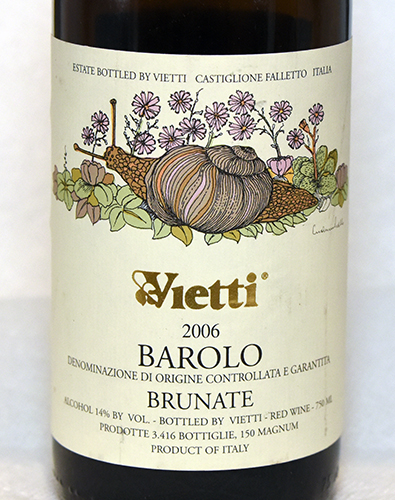
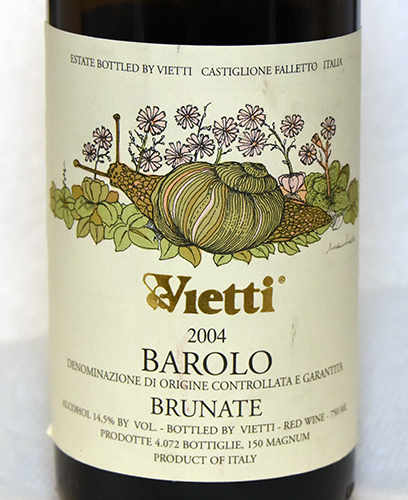
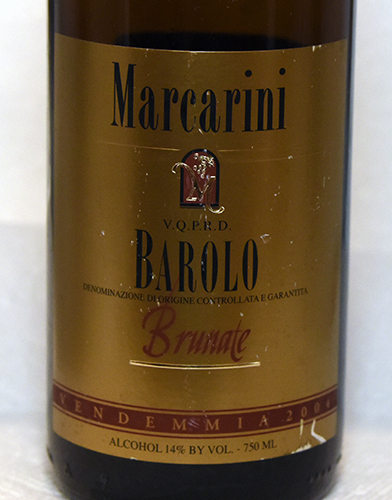
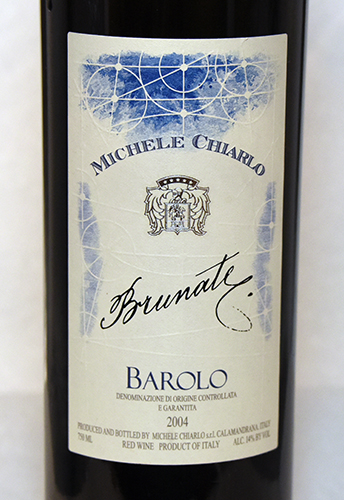
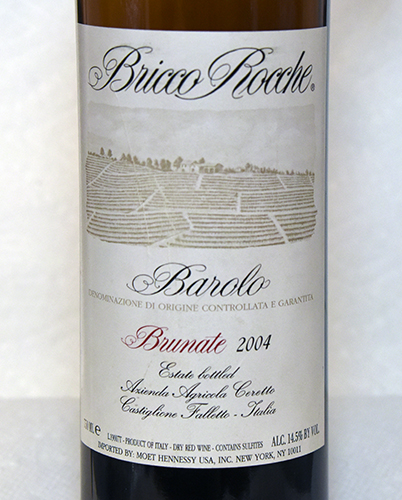
Page last updated: October 15, 2017 (EB)

